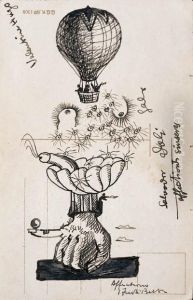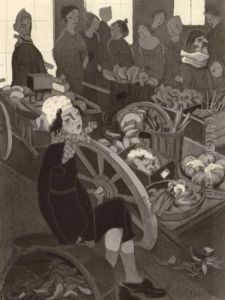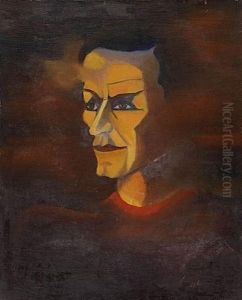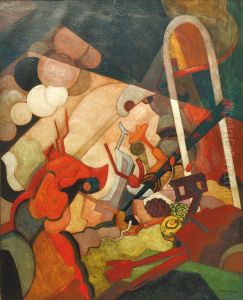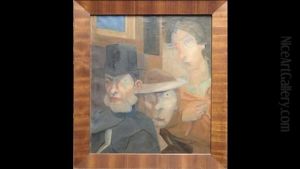Jean De Bosschere Paintings
Jean De Bosschere was a multifaceted Belgian artist, writer, and illustrator, whose work spanned a range of styles and disciplines, reflecting the tumultuous cultural and artistic shifts of the early 20th century. Born on February 10, 1878, in Brussels, Belgium, De Bosschere grew up in an era marked by rapid industrialization and the resultant social changes which he later reflected upon in his diverse body of work. He was part of a generation that witnessed the horrors of World War I, an experience that influenced much of his artistic and literary output. De Bosschere's work is noted for its eclectic nature, drawing from Symbolism, Art Nouveau, and later, the emerging modernist movements.
In his early career, De Bosschere was closely associated with the Symbolist movement, which sought to express the mystical and emotional aspects of human experience, often through highly stylized and decorative imagery. His illustrations and writings from this period are marked by a fascination with the fantastical and the macabre, themes that would remain prevalent throughout his life. As an illustrator, De Bosschere contributed to the visual interpretation of literary works by authors such as Charles Baudelaire and Edgar Allan Poe, bringing a unique blend of grotesque and erotic elements to the forefront of his compositions.
Throughout the 1920s and 1930s, De Bosschere continued to evolve as an artist and writer, engaging with the avant-garde communities in Paris and London. His work from this period reflects a shift towards modernism, though he never fully abandoned the symbolic and decorative elements of his earlier style. De Bosschere was also an accomplished writer, publishing several books of poetry, essays, and criticism, as well as novels that explored the psychological and existential dilemmas of modern life. His literary work is characterized by a rich, imagistic language and a deep engagement with the themes of sexuality, death, and the unconscious.
Jean De Bosschere's contributions to the arts were not limited to his own creative output. He was an influential figure among his contemporaries, championing the work of other artists and writers and contributing to the intellectual and cultural dialogues of his time. Despite his significant impact, much of De Bosschere's work remained relatively unknown outside of Belgium and France during his lifetime, and it was only posthumously that his contributions began to be more widely recognized.
De Bosschere died on January 17, 1953, in Paris, France. Today, his work is celebrated for its visionary qualities and its role in bridging the gap between the Symbolist movement and the early modernist sensibilities of the 20th century. His illustrations remain particularly admired for their unique combination of beauty, horror, and mysticism, while his literary works continue to be studied for their insightful exploration of the human psyche and the complexities of the modern world.
